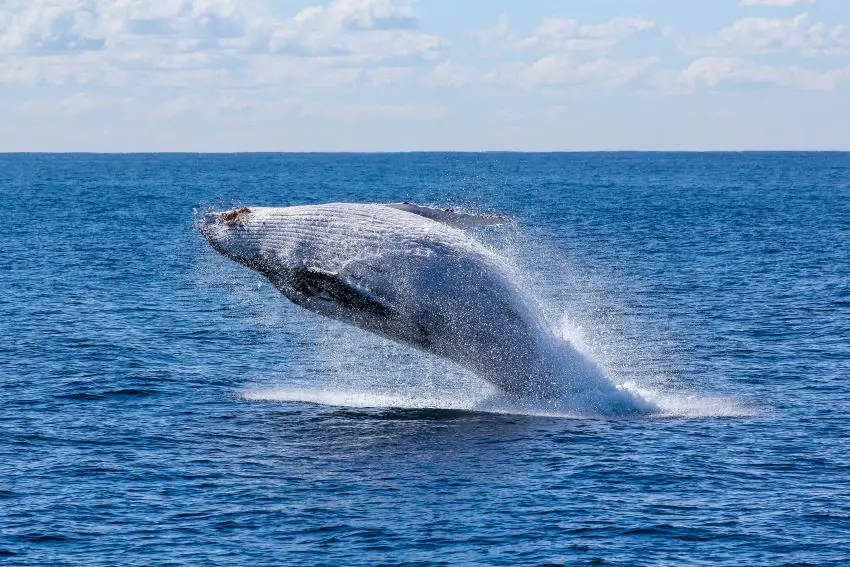Baja California whale season is officially underway

Whale-watching season began this week in Mexico, and the Baja California Sur Tourism Ministry (Sectur-BCS) is inviting the public to experience what some call “the most extraordinary wildlife encounter on the planet.”
And lest you think Sectur-BCS is trying to rope in unsuspecting tourists, even The Oceanic Society — based in California, which boasts its own whale-watching season — describes the coast off the Baja California Peninsula as “one of the best places on earth for whale watching.”

In part, this was made possible by Mexico’s decision to create the San Ignacio Lagoon Nature Reserve in 1972 in Baja California Sur (after a chance encounter that year between a gray whale and a local fisherman named Francisco Mayoral) and its subsequent designation of the lagoon as a whale sanctuary within the El Vizcaíno Biosphere Reserve in 1988.
These actions helped the gray whale population recover from near extinction such that they were removed from the endangered species protection list in 1994.
Human-whale encounters
At the end of each summer, up to 1,500 California gray whales leave the cold Alaskan waters and journey to the warmer climes off the coast of the Baja California Peninsula, arriving by early December and remaining there for about three months.


Here, whales mate, give birth and nurse calves conceived the year before, attracting tourists eager to see the world’s largest mammals up close.
The Oceanic Society explains that the unique geography of the peninsula and the diverse marine topography, which ranges from protective shallow lagoons to deep trenches rich with food, attract over 30 different species of whales and dolphins.
As a result, the National Resources Defense Council has referred to San Ignacio as “the last undisturbed breeding and calving lagoon” for the gray whale. Along with the nearby Scammons Lagoon (or Ojo de Liebre, near Guerrero Negro) and Magdalena Bay, these are the only places in the world where gray whales give birth. What makes the experience even more spectacular is that gray whale mothers regularly seek out human interaction, according to one tour operator.
The revival of the gray whale population has generated a thriving, heavily regulated and dedicated ecotourism industry, according to the BBC.


On its website, Baja EcoTours writes that the mothers “approach our boats to present their newborn calves to us while encouraging visitors to scratch their heads, back, and baleen as they lounge around our boats.” Another firm, Baja Expeditions, describes the San Ignacio Lagoon as “whale central,” where the gray whales participate in “human-watching and interaction.”
Protecting the whales
Mexico’s federal and state governments promote responsible tourism when whale-watching which is also possible farther south in Jalisco and Oaxaca.
Baja California Sur regulates the industry by issuing permits to tour operators and encourages tourists to rely exclusively on official operators.
Additionally, whale-watching is only allowed in specified areas of the protected whale sanctuaries, and there are strict rules:
- Only 16 pangas (small fishing boats) are allowed at a time
- All boats must turn off their motors when whales are nearby
- Boat operators are prohibited from chasing or pursuing the whales
Although Baja California is best known for its gray whales, sightseers can also catch a glimpse of blue whales, fin whales, humpbacks, and even sperm whales feeding in the rich waters of the Gulf of California on the eastern side of the peninsula.
With reports from Tribuna de San Luis, Noro, BBC and The Oceanic Society
Source: Mexico News Daily

